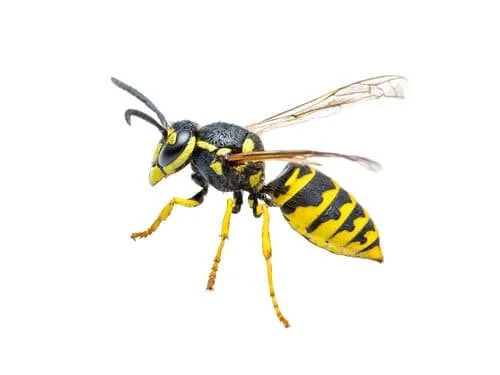Wasp Control and removal in Hamilton Ontario
We all know that wasps are potentially harmful and are among the most unpopular bugs to deal with. Wasps are enough to make most people nervous, whether they're destroying a picnic, buzzing around the lawn, or being an annoyance inside your home. There is probably a nest in the area if you've seen more wasps than normal buzzing around your home. Thus, wasp control Hamilton Ontario is best left to trained experts but you may still have many questions regarding the procedure.
Appearance of wasp
If you want to know if you have a wasp problem, you need to know what the insects look like. Look for few telltale signs to identify wasps from other flying pests. They have colors like yellow, red, metallic green and blue, black, and brown. A cinched waist, two sets of membrane wings is part of their body appearance. They are less hairy and slimmer than the average bee.
What makes them so dangerous?
Wasp nests, particularly those in inconspicuous locations like the attic, might remain undiscovered for quite some time. Attempting to perform wasp control Hamilton Ontario on your own could lead to numerous painful stings by aggressive wasps, especially if they feel their nest is in danger. Anaphylactic shock, redness, and swelling can result after a bee sting and some people aren't even aware they have an allergy to these insects. If you are concerned about the safety of your family, your property, or children—especially older people and pets—you should probably contact a home pest control service. Their stings can be quite painful.
Well, ignoring a nest in a garden or other outside space is acceptable. Business owners must address the issue promptly to ensure the public's safety. Getting rid of them becomes an immediate problem during peak activity (late summer) because nests can include 5,000 wasps. A professional pest control Hamilton Ontario exterminator may be necessary to treat a nest, even if the nest itself does not necessitate removal. All pest experts will also have the specialized gear to protect themselves against stings.
Habitat
Different species of wasps have different nest shapes, sizes, and placement preferences. Paper wasps make their nests out of a substance that looks like paper, which they get by chewing and sticking together bits of plant matter. With 150 to 300 cells, the nests are single-layered and comb-like without a clearly defined perimeter. In the case of yellow jackets and hornets, the nest is likewise made of plant materials. It is multi-layered, with five to nine combs and 1,500 to 3,500 cells altogether. Hollow trees, wall voids, sheds, garages, and attics are common places to find nests, along with trees and bushes. Some species of hornets and yellow jackets lay their eggs in the earth. Typically, ground nests are found in places where there is little to no vegetation. Solitary wasps are known as mud daubers. Mud daubers build their nests using mud, as the name implies. The best places for mud daubers to establish their nests are in protective areas, such as within buildings or behind walls.
Diet
Plant nectar, fruit juices, and honeydew make up the bulk of a wasp's diet. Having said that, the majority of wasps that cause problems for us are actually scavengers or carnivores that feed on other types of insects. Because of their predatory nature, wasps are useful for controlling insect pests in gardens and agricultural crops. Wasps are bothersome pests because their scavenging behavior brings them to human areas or activities where food is available.
Cycle of Life
Wasps mature into adulthood after a whole transformation. Around six weeks is required for the entire procedure. For several weeks following hatching, the newly formed larvae consume insects that the stinging female workers have brought in. The next several weeks are spent in the pupal stage, which is similar to a cocoon. During this time the young wasps change into adult wasps. Workers are normally only produced by the queen at the beginning of the season. They take care of the young while the queen lays eggs.
By early autumn, wasp colonies have multiplied to their maximum number. This time of year typically sees the birth of a new generation of both sexes. The colony will eventually die out because to the decline in temperature. But the males will perish soon after mating. In order to start new colonies in the spring, fertilized females, also known as queens, lay eggs after overwintering. Attics, barns, garages, and other easily accessible storage spaces are common places for wasp queens to hibernate. This is because of the low volume of human activity there.
Prevent wasps from returning: but how is this possible?
After locating an ideal nesting spot, there is no definite way to stop them from constructing a nest. But you can lessen the possibility of it happening by taking some measures. To perform wasp removal Hamilton Ontario, secure and close all the windows and doors. This may not be feasible during the warmer months, but fly screens can keep them out while allowing air to circulate. Ensure your bins are tightly covered and ideally placed away from the home, which can be particularly greedy in the summer. Before spring arrives, looking around for nests is a good idea, mainly if you've dealt with them. They are often much smaller (around the size of a golf ball) and much easier to handle when caught early. Inspect all the hidden places, such as garages, sheds, and attics. A pest management professional (PMP) is the best source of information regarding the safest and most successful methods and recommendations for wasp control Hamilton Ontario. We all know that there are many do-it-yourself techniques and supplies readily available. Before attempting something on your own, you should always make sure to consult with your PMP.
Reliable pest control services to deal with wasp infestation in Hamilton Ontario
Call Eco Pest Control if you need reliable pest control services and are dealing with a nest infestation. Professional wasp control Hamilton Ontario exterminators on our team are on call around the clock every day of the year to get the job done well. Our removal procedures are adaptable to any property type and are safe, discreet, and successful.


